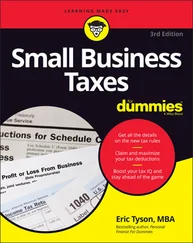https://www.forbes.com/sites/cartercoudriet/2019/11/27/how-fit-is-your-school-the-methodology-behind-forbes-2019-college-financial-health-grades/#2532733261c4
Colleges are under pressure to contain their prices
Another trend that has picked up steam in recent years are colleges cutting their advertised prices. This may sound contradictory to the long-term fast rising prices I covered earlier in the chapter. What’s happening here is after so many years of raising prices much faster than the overall rate of inflation and many of their peers, some private colleges found that they weren’t even being considered by some families that were suffering sticker price shock and set limits on the price of schools they would consider.
As I explain in detail in Part 4, what matters is the net price that a school charges your child — that is the list price less any scholarships or grants (discounts) they may offer to your family. Colleges that have decided to do overall one-time reductions in their prices also reduce the amount of grants that they offer so that net, the school is still effectively collecting the same amount of money annually. Doing these resets helps these schools get their pricing back down to a more reasonable level.
Lower cost and faster alternatives to colleges are growing
Trade schools and apprenticeship programs are hardly new. But coding boot camps started in 2012 and will have 29K graduates in 2019. These programs originated because entry level software developer jobs were going unfilled due to the inadequate training that college graduates were receiving. These were the first so-called “last mile training programs” according to industry observer and venture capitalist Ryan Craig. Now these programs encompass a wide range of IT related disciplines and other fields with a technology component.
The early coding boot camps were tuition-based — meaning that the enrolled students paid for the training they got. The coding boot camps were quickly able to show the hiring statistics for their graduates and began to shift over to income-share programs whereby their students agree to pay a modest percentage of their future income for a set period of time instead of having to pay up-front for the training. Most but not all coding camps use this income-share approach which shows an alignment of interests of the school and the students.
Craig recounts speaking before hundreds of college administrators and asking those in attendance to raise their hand if they provided any training on the widely used Salesforce platform and not a single hand went up. “There is the myth of the digital native. College administrators seem to believe that since their students know how to use an iPhone, Netflix and computers they are digitally competent and savvy,” says Craig. But of course that doesn’t mean they have the required technological training for entry level jobs which Craig points out in most companies is on a SaaS (software as a service) platform.
According to the website Alternatives To College, which Craig was instrumental in founding ( https://www.alternativestocollege.com/ ), at last check the site lists more than 420 alternatives to college, nearly 20K open jobs not requiring a college degree, and over 800K open jobs requiring some type of certification.
 Programs that provide an employment path for those who don’t go to college are on the rise so that also means that more employers are hiring people without a college degree.
Programs that provide an employment path for those who don’t go to college are on the rise so that also means that more employers are hiring people without a college degree.
Bottom line is good for you, the college and higher education consumer
Competition and increased choices are generally a good thing for you the consumer. That’s what has produced amazing technological products like smartphones, powerful personal computers, safer and more fuel-efficient cars, fast casual restaurants of a mind-boggling variety, ultra-safe jet airplanes, and so forth.
Thanks to the increasing numbers of alternatives to college that are doing a good job meeting their customers’ needs, colleges are under far more pressure now to contain their costs and better meet the needs of their students. Some of the worst and most inefficient colleges are shuttering their doors.
It is precisely because colleges weren’t doing enough to meet their customers’ needs — by providing cost effective education that met the needs to what employers and students wanted — that these college alternatives are multiplying and expanding. And the better colleges that are open to change and what their customers want are improving what they offer and trying to contain their costs. That’s the beauty of competition. Enjoy it and reap the rewards from it!
Конец ознакомительного фрагмента.
Текст предоставлен ООО «ЛитРес».
Прочитайте эту книгу целиком, на ЛитРес.
Безопасно оплатить книгу можно банковской картой Visa, MasterCard, Maestro, со счета мобильного телефона, с платежного терминала, в салоне МТС или Связной, через PayPal, WebMoney, Яндекс.Деньги, QIWI Кошелек, бонусными картами или другим удобным Вам способом.

 Programs that provide an employment path for those who don’t go to college are on the rise so that also means that more employers are hiring people without a college degree.
Programs that provide an employment path for those who don’t go to college are on the rise so that also means that more employers are hiring people without a college degree.










